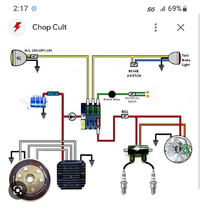How much of a difference do you have there in space left and existing spacer width?
My preference would be to make a proper spacer. Spreading the axle plates is asking for binding issues. Too long a spacer, or too short a spacer, likewise will cause binding issues when the axle is tightened. I'd shoot for a spacer about .5mm less than the existing space. It might be possible to stack washers for mock-up purposes (depends on the thicknesses available and your luck).
BTW - good progress!
My preference would be to make a proper spacer. Spreading the axle plates is asking for binding issues. Too long a spacer, or too short a spacer, likewise will cause binding issues when the axle is tightened. I'd shoot for a spacer about .5mm less than the existing space. It might be possible to stack washers for mock-up purposes (depends on the thicknesses available and your luck).
BTW - good progress!
Last edited:

